Filter by

The Unfinished Art of Theater: Avant-Garde Intellectuals in Mexico and Brazil
The avant-garde posits the possibility of total rupture with the past. This book pulls back on this futuristic impulse by showing how theater became a key site for artists on the edge of capitalism to reconfigure the role of the aesthetic between 1917 and 1934. The book argues that this “unfinished art”—because of its weakness as a representative institution in Mexico and Brazil, where th…
- Edition
- -
- ISBN/ISSN
- 9780810137417
- Collation
- -
- Series Title
- -
- Call Number
- 792 TOW u
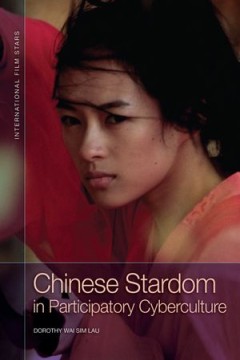
Chinese Stardom in Participatory Cyberculture
As Chinese performers have become more visible on global screens, their professional images - once the preserve of studios and agents - have been increasingly relayed and reworked by film fans. Web technology has made searching, poaching, editing, posting and sharing texts significantly easier, and by using a variety of seamless and innovative methods a new mode of personality construction has …
- Edition
- -
- ISBN/ISSN
- 9781474430357
- Collation
- -
- Series Title
- -
- Call Number
- 791.43 LAU c
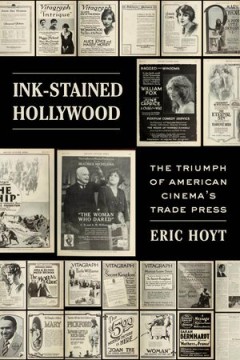
Ink-Stained Hollywood: The Triumph of American Cinema’s Trade Press
For the first half of the twentieth century, no American industry boasted a more motley and prolific trade press than the movie business—a cutthroat landscape that set the stage for battle by ink. In 1930, Martin Quigley, publisher of Exhibitors Herald, conspired with Hollywood studios to eliminate all competing trade papers, yet this attempt and each one thereafter collapsed. Exploring the c…
- Edition
- -
- ISBN/ISSN
- 9780520383708
- Collation
- -
- Series Title
- -
- Call Number
- 777 HOY i
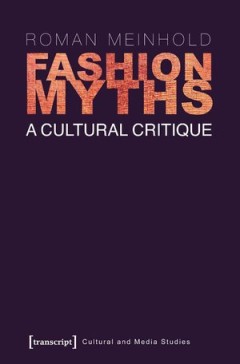
Fashion Myths: A Cultural Critique
Besides products and services multinational corporations also sell myths, values and immaterial goods. Such 'meta-goods' (e.g. prestige, beauty, strength) are major selling points in the context of successful marketing and advertising. Fashion adverts draw on deeply rooted human values, ideals and desires such as values and symbols of social recognition, beautification and rejuvenation. Althoug…
- Edition
- -
- ISBN/ISSN
- 9783837624373
- Collation
- -
- Series Title
- -
- Call Number
- -
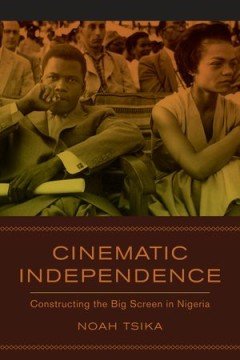
Cinematic Independence: Constructing the Big Screen in Nigeria
Cinematic Independence traces the emergence, demise, and rebirth of big-screen film exhibition in Nigeria. Film companies flocked to Nigeria in the years following independence, beginning a long history of interventions by Hollywood and corporate America. The 1980s and 1990s saw a shuttering of cinemas, which were almost entirely replaced by television and direct-to-video movies. However, after…
- Edition
- -
- ISBN/ISSN
- 9780520386105
- Collation
- -
- Series Title
- -
- Call Number
- 791.43 TSI c

Towards a Feminist Cinematic Ethics: Claire Denis, Emmanuel Levinas and Jean-…
Towards a Feminist Cinematic Ethics develops an account of non-normative ethics that can be used to think about filmmaking and viewing, using two philosophers—Emmanuel Levinas and Jean-Luc Nancy, and the work of filmmaker Claire Denis. In an accessible and engaging manner, it offers new readings of Denis' films, situating them within larger feminist, postcolonial and queer debates about …
- Edition
- -
- ISBN/ISSN
- 9781474409520
- Collation
- -
- Series Title
- -
- Call Number
- 777 HOL t
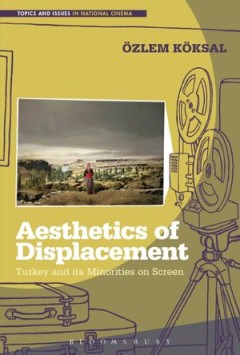
Aesthetics of Displacement: Turkey and its Minorities on Screen
Looking at films that represent the experience of displacement in relation to Turkey’s minorities, Aesthetics of Displacement argues that there is a particular aesthetic continuity among the otherwise unrelated films. Ozlem Koksal focuses on films that bring taboo issues concerning the repression of minorities into visibility, arguing that the changing political and social conditions determin…
- Edition
- -
- ISBN/ISSN
- 9781501306464
- Collation
- -
- Series Title
- -
- Call Number
- 791.43 KOK a
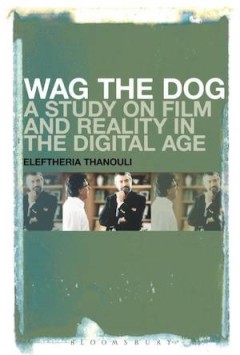
Wag the Dog: A Study on Film and Reality in the Digital Age
Wag the Dog became a media event and a cultural icon because it inadvertently short-circuited the distance that is supposed to separate reality and fiction. The examination of the historical and social context in which it was produced, exhibited and received worldwide enables the author to illuminate a series of changes in the way a fiction film reflects and interacts with reality, urging us to…
- Edition
- -
- ISBN/ISSN
- 9781501307270
- Collation
- -
- Series Title
- -
- Call Number
- 791.43 THA w

Emotional Excess on the Shakespearean Stage: Passion's Slaves
Emotional Excess on the Shakespearean Stage demonstrates the links made between excess of emotion and madness in the early modern period. It argues that the ways in which today's popular and theatrical cultures judge how much is too much can distort our understanding of early modern drama and theatre. It argues that permitting the excesses of the early modern drama onto the contemporary stage m…
- Edition
- -
- ISBN/ISSN
- 9781408179680
- Collation
- -
- Series Title
- -
- Call Number
- 792 ESC e

Documenting Racism: African Americans in US Department of Agriculture Documen…
From the silent era through the 1950s, the U.S. Department of Agriculture was the preeminent government filmmaking organization. In the United States, USDA films were shown in movie theaters, public and private schools at all educational levels, churches, libraries and even in open fields. For many Americans in the early 1900s, the USDA films were the first motion pictures they watched. And yet…
- Edition
- -
- ISBN/ISSN
- 9780826405555
- Collation
- -
- Series Title
- -
- Call Number
- 791.43 WIN d
 Computer Science, Information & General Works
Computer Science, Information & General Works  Philosophy & Psychology
Philosophy & Psychology  Religion
Religion  Social Sciences
Social Sciences  Language
Language  Pure Science
Pure Science  Applied Sciences
Applied Sciences  Art & Recreation
Art & Recreation  Literature
Literature  History & Geography
History & Geography